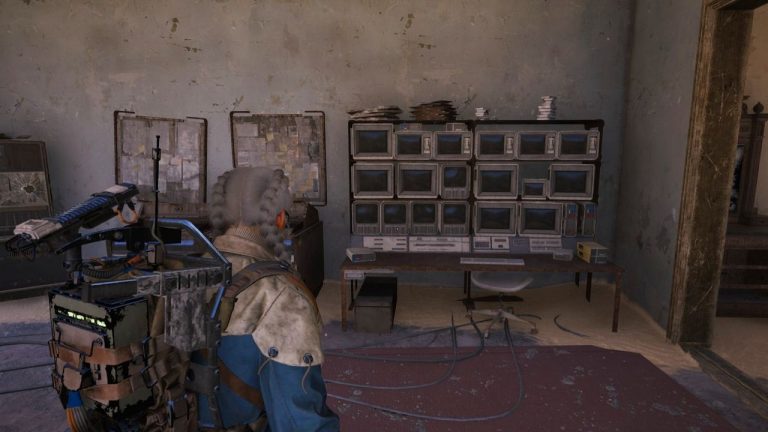With its new romantic boundaries system, The Sims 4 finally allows you to play polyamorous families without watching relationships crash and burn in the flames of cheating accusations any time one of them gets slightly flirty with a crush. The system hinges on jealousy being a spectrum, and allows you to get pretty granular with whether your Sim is okay with their partners being flirtatious or physical with other Sims and whether they’re up to changing their boundaries through gameplay and conversations.
But as with all things in The Sims, sometimes you need a bit of inspiration. You could play a solo sim with totally open relationship boundaries dating around, but the real fun is in managing a bigger family with its own quirks and challenges. PC Gamer contributor Sarah Richter is helping serve some inspo by outlining five kinds of polyamorous households that exist in real life so I can recreate them in The Sims. Some deliver cozy, easy love stories while others might dig up a little drama to challenge your micromanagement skills.
The new Romantic Boundaries menu in Create-A-Sim (Image credit: Electronic Arts)
Check our full guide on The Sims 4 romantic boundaries system for all the details, but the basics are:
“Open” boundaries mean that your Sim has the boxes ticked “No” for experiencing jealousy in Create-A-Sim”Closed” boundaries mean that your sim has the boxes ticked “Yes” for experiencing jealousy
Non-hierarchical triad
Kathy the knitting enthusiast (in a sweater) and her two girlfriends: Tara the outgoing gossip fiend and Daniella the crystal jewelry crafter. (Image credit: Electronic Arts)
Sarah: A triad relationship creates an equitable triangle shape, where each person is in a relationship with the others. Sometimes triads will share private spaces, with either a shared bedroom or just most spaces being communal.
Polycule: term for a person’s network of relationships
Hierarchical: relationships that treat one relationship as more important
Egalitarian: when relationships are all treated as equally as possible
Metamour: the partner of your partner, who you aren’t in a relationship with
Lauren Morton, Associate Editor: This relationship highlights an interesting wrinkle in The Sims 4’s romantic boundaries. I’ve made a household of three women, all set as partners with one another in Create-A-Sim. I initially wanted to convey that this triad was a closed relationship, so I gave them all closed romantic boundaries but they wound up becoming jealous of each other. When Kathy smooched Tara, Daniella got jealous and same for any other combination of flirting and affection between partners. Ladies, I thought we were all in agreement here! But The Sims 4 doesn’t quite comprehend an exclusive polycule.
To avoid a catastrophic breakup, I had to play this household with all three members open to their partners having intimacy with others and just make the conscious choice not to have them pursue anyone outside the household.
Sarah: Though it would be nice to be able to set relationships to closed or open, it’s nice that The Sims 4 is robust enough that you can still manipulate the system manually to make this relationship work. More importantly, it would be nice to be able to have jealousy turned on and still have relationships play out without an inevitable self destruction.
Lauren: You can do that by ticking the “jealousy triggers can change” box in Create-A-Sim! I’ll try that with some of our more developing relationship situations.
Non-hierarchical hinge
City Living roommates Joaquin and Sergio, now boyfriends by my decree, and Sergio’s new girlfriend Ella. (Image credit: Electronic Arts)
Sarah: Unlike a triad, this particular type of polyamorous relationship is where one person is in two unconnected relationships. The partner in two relationships is the ‘hinge,’ forming a ‘v’ shape if you visualize the relationships. Critically, the hinge’s two partners are not in a relationship with one another, and are just metamours and friends. Most hinge relationships tend to have private spaces for each individual.
Lauren: To achieve this relationship, I gave our “hinge” partner Sergio closed relationship boundaries but his two partners Joaquin and Ella both have open boundaries. For a little added challenge, I also gave Joaquin the “jealous” trait in Create-A-Sim. His romantic boundaries aren’t being disrespected when he sees Sergio flirting with Ella, but he does feel some kind of way about it and gets a “tense” moodlet called “Lingering Insecurities” for a few hours. Through conversations with other Sims, Joaquin can tackle those feelings and eventually earn the “Romantic Sage” trait which is a boost to his overall romantic satisfaction and lets him self-soothe his insecurities in the future.
Sarah: This is a lovely example of something that absolutely happens in real life relationships—working through insecurities by communicating with your friends and partners. Polyamorous relationships aren’t immune to jealousy whatsoever, and in truth learning to understand and deconstruct jealousy so that we know why we are feeling jealous is a key part of successful relationships—whether monogamous or polyamorous.
Mono-poly
Bob and Eliza Pancakes finally getting their act together. (Image credit: Electronic Arts)
Sarah: A less common example of polyamory where a relationship is split down the middle—with one partner monogamous to the other, but the second partner being polyamorous and having other partners. Often these relationships rely on the polyamorous person either spending time with their other partners outside of their shared home, or having a separate private space there for spending time with other partners.
Lauren: I’ve tapped my glow-up versions of Bob and Eliza Pancakes for this one, which may be inauspicious since we know their marriage is a bit rocky. In this alternate universe, Bob and Eliza get married while Eliza is still dating other partners. Maybe this helps them learn to have conversations about all kinds of boundaries so they don’t wind up unhappy later.
This scenario is pretty easy to achieve, but it does highlight how The Sims 4’s romantic boundaries work a bit backwards. The monogamous partner (Bob, here) needs to have open romantic boundaries so their polyamorous partner (Eliza) can freely pursue other relationships but the poly partner should have closed boundaries. Actually, this also works if both partners have open boundaries but the monogamous partner has the “loyal” trait that makes them unlikely to cheat. It feels a little more like a healthy, respectful relationship that way, I think.
Beware though, the “loyal” trait has historically been a little buggy and it’s possible your Sim could wind up distraught after being flirted with by someone random, whoops.
Hierarchical polycule
Kellan the shy foodie and their husband Jerrod the chef have a new boyfriend: party animal bartender Grant. (Image credit: Electronic Arts)
Sarah: With this household, one relationship is considered above the others, often a marriage or simply the oldest or ‘first’ relationship that later became an polyamorous one. Unlike a more egalitarian polycule, this central relationship has more privilege and power, whether it has ‘veto’ rights over new and existing relationships of the people in it, or simply carries far more weight in decision-making.
Lauren: Functionally, this setup will likely be similar to one of the three above. I created Kellan as a shy food lover married to Jerrod the chef, both of whom are partners with their newly cohabitating boyfriend Grant the bartender all with open romantic boundaries.
There’s some nuance here that The Sims 4 doesn’t quite manage to convey because Spouses and Partners have the same interactions as one another, so you might have to create some of this story through gameplay and your own imagination. Rather than create this entire household in CAS, as I did, I’d recommend beginning a new relationship with a third Sim and living through their journey from dating current household member(s) to living together.
Non-hierarchical polycule
Spouses Kieran and Hailey (front), with Kieran’s best friends Gavin and Elise (back). (Image credit: Electronic Arts)
Sarah: Inside this style of household are a variety of diverse relationships—and not everyone is in one with everyone else, some people may just be metamours and roommates. Most critically, both the household and relationships inside it are egalitarian, with nobody being above anyone else. Sometimes each person will have their own space, but other times some groupings of partners may share private spaces or bedrooms or even move between them from day to day.
Lauren: This household is fun to make but chaotic to play! Kieran and his wife Hailey, who have open relationship boundaries, live with Kieran’s long-time besties Gavin and Elise who are newly dating. The latter two have closed boundaries but are open to talking about changing that—which they’ll need to—because Elise is also catching feelings for Hailey.
The details are up to the player here on who is dating whom and whose boundaries are open or closed. Remember to make use of other personality traits like “jealous” or “romantic” or “loyal” to shape each relationship or use the “romance dynamic” setting for each relationship if you have the Lovestruck expansion. I also made use of the “assign bed to” function by clicking on beds in the house to denote that Kieran and Hailey have a consistent space in the house but Elise may float around freely between partners.
Sarah: Honestly, this result is the most surprising to me, simply because I didn’t imagine something so complex to manage in real life could be replicated. With that, it really nails ‘fun but chaotic,’ which is what a busy relationship life can sometimes feel like.












